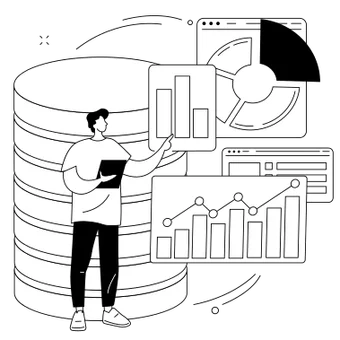To make the most of your Shopify data, you need to know how to create API credentials for Shopify. Creating API credentials also protects data and ensures smooth integration.
However, as opposed to other connectors, setting up a Windsor.ai connector is extremely simple.
- It can only be done via the Shopify App Store
- Just locate the Windsor.ai connector and install it from there.
Signup for a free trial now >>
This method is the simplest and most convenient way to create API credentials. But of course, you can also go via the longer and more complicated route for other connectors. Compare both options and decide for yourself.
How to create API credentials for Shopify
- Log in to your Shopify store
- Once you’re in, you’ll need to enable private app development from the Shopify Admin (Only the owner of the story can do this, but the steps are quite simple)
- Go to Apps
- Select Manage private apps
- Click Enable
- Once you’re done reading the terms, click Enable private app development
- After you’ve enabled the development of private apps, click ‘Create private app’
- Open the App details section, choose a name for your private app and then tie it to a valid email address. The email is needed because Shopify will contact you if there is an issue with the private app that might cause disruptions in the API integration.
- The Admin API section on Shopify gives you a chance to pick the areas that the app can access. So, you don’t have to provide API access to all areas of the store.
- If you need or plan on using the Storefront API, you will also need to enable the app to access the relevant storefront data. (This step is optional)
- The Shopify Storefront API allows you to collect more data regarding sales and purchases regardless of where your customers came from, whether an app, a video game or a website. The Storefront API comes in handy for custom requirements not covered by mainstream channels like POS or the online store.
- If the Storefront API is public and not authenticated, there’s nothing to worry about. Windsor.ai precisely steps in here.
- Click ‘Save’
Once the details are saved, you can see the key and password for the app’s API.
Also read:
Connect Shopify to Google Sheets
Shopify Google Data Studio Connector
Setting up the Windsor.ai Shopify Connector
Now that you have created the API credentials, the next step is to set up the Windsor.ai Shopify connector.
The Shopify Connector also needs to be installed via Shopify. There are fewer steps in this part of the process.
- Find the Windsor connector and install it.
- Once the connector is in place, choose the store or stores you wish to link.
- The next step is to select the destination.
There are multiple data destinations. It depends on your preference and the platform you use to analyze your data. As you can see, Tableau, Looker Studio, Google Sheets, Excel, Python, and more.
There are options for different purposes on Windsor.ai. But it also depends on your preferences and what type of reports you prefer. If you’re familiar with Windsor.ai, there’s no need to explain this step to you in great detail.
Finally, you can also choose the database or databases from which you can get the data. Google Big Query and Windsor.ai Cloud Database are among the offered options here.
How to use the Shopify Connector
Once it’s all set, let’s take a look at the options that the Shopify Connector offers. Here’s a sample of the structure:
The Shopify data is shown on an object level and if you specify the date fields you can use that as a filter to view data based on the period when it was collected, i.e. when the objects were created.
Some of the Customer available fields are:
- Customer created at – The date and time when the entry for a customer/visitor was created in the system
- Currency – This can be quite useful if you sell goods or services in multiple countries and your customers pay using different currencies.
- Email address – If the customer has provided an email address, which is usually the case, you can use it for remarketing purposes, cross-selling, and more.
- ID – This is the unique ID for each customer that is created in the system.
- Note – This is a customized note that you have created about the customer and it can refer to anything and everything. It depends on the nature of the business and the type of goods or services you offer.
The types of fields based on their function are timestamp, text, date numeric, and Boolean. All of the fields are explained and described here. Just select the Shopify Connector, and you can read more details regarding the fields.
Conclusion
Shopify is one of the largest e-commerce platforms, and its analytics allow you to get insight into the recent activities of your visitors, their shopping patterns, and habits. However, you can also analyze aspects like the speed of online stores and more. Automating the data extraction is one of the key functions and benefits of the Windsor.ai API.

Try Windsor.ai today
Access all your data from your favorite sources in one place.
Get started for free with a 30 - day trial.
You might also like to read:
Shopify CLV and net revenue attribution
Free E-Commerce Dashboard Templates
Addressing attribution problems in Shopify for subscription products
Microsoft Power BI Multichannel Marketing Attribution Dashboard Template
